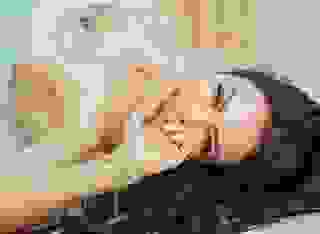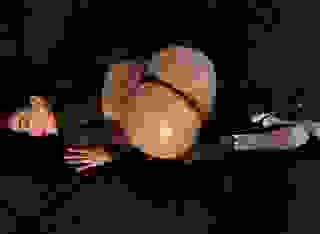Note: You can change font size, font face, and turn on dark mode by clicking the "A" icon tab in the Story Info Box.
You can temporarily switch back to a Classic Literotica® experience during our ongoing public Beta testing. Please consider leaving feedback on issues you experience or suggest improvements.
Click here"Yes?" the voice answered.
"Hi, this is Tom Connors. I have a meeting with ..."
"Hi, Tom. This is Karen Matsumoto. I'll be right out to let you in."
In spite of Bethany's offhanded comment that she and Karen were in the same Zumba class, I had nonetheless expected the Director of the University Library's Special Collections Department would be an aging, frumpy, blue-haired woman with wire-frame glasses and a 1950's era print dress that she might have purchased to celebrate Eisenhower's election as President.
So much for stereotypes.
Except for her obviously Japanese facial features, Karen Matsumoto could have been Bethany's twin sister. She was a knockout, a very fit-looking 5 feet 3 inches, perfect skin, shoulder length black hair, and a smile that would light a baseball stadium. The pink floral pattern loose-fitting, sleeveless summer dress stopped enticingly above her knees and showed enough of her obviously shapely breasts to get my attention. The dress's arm openings were quite loose and open, enough so it was clear to see she was not wearing a bra.
"Come in, Tom. Thank you for coming on such short notice. Based on what Bethany told me on the phone this morning, I'm very eager to look at everything you have."
I stepped inside the building's front door expecting some sort of reception area. There was none. Just a hallway with several doors off to either side.
I was glad I had worn cargo shorts and a loose-fitting short-sleeve cotton shirt. It was hot inside the building.
"Let's go in my office first, and I'll explain some stuff before we go into the lab to examine your item."
While we walked, Karen said, "I feel as if I already know you. Bethany spoke very highly of you on the phone this morning. In fact, when she finally told me your name, I recognized it. I was a fan of yours when you were on the school's swim team. You are that Tom Connors, right?"
"Yes, that's me all right. I'm sorry, but I don't remember you from my undergrad days. Were you on one of the women's swim teams then? Or had someone introduced us?"
She laughed and even blushed a little.
"No, you were probably six or seven years old when I was a freshman here at U, but thank you for the compliment. I was on the women's gymnastics team and also the women's jiu-jitsu team. I tell people I'm a recreational swimmer, but a better characterization of my form in the water would probably be 'splasher and flopper.' You, on the other hand, were extremely graceful. It was almost as if you were part of the water rather than swimming in it."
"So were you working at the library when I was an undergrad here?" I asked.
"No. I got my BS in Chemistry in 2001 and went to work for the University Police Department. By the time you made the swim team, I had my PhD and had been detailed from the UPD to the Library for a special assignment. I kept my state police commission though, and for special events like athletic events, I'd volunteer to go back into uniform to work security.
It was at one of the swim meets that I remember first seeing you and being so impressed. You were quite a distraction as a swimmer. Like I said, really graceful in the water. Not to embarrass you too much, but I volunteered to work UPD security at the swim meets just to watch you.
I still teach defensive tactics to our UPD officers to supplement the basic stuff they get at the POST academy. And if the University gets any law enforcement inquiries involving Special Collections, those come to me for coordination and whatever investigation or assistance we're asked to provide."
Now I was very interested. Surely this poised, articulate, and well-educated woman with a PhD in Analytical Chemistry could have found a more interesting career than working for the campus cops at our relatively obscure state university.
There had to be more to her personal story, but before I could question her further, we stepped into her office. I made a mental note to pursue her odd career choice.She suggested I put the box on the floor. Then she offered a cold bottled water.
It was warm outside and hot inside the building. The cold water was appealing.
"Please, water would be nice."
She retrieved a small plastic bottle of water from the refrigerator behind her and handed it to me. Then, after inviting me to sit in the chair across from her, she sat down behind her rather small and very uncluttered desk. In fact, the only items on its top were a yellow legal pad and a ballpoint pen.
"I'm really sorry about the temperature in here, Tom. Our antiquities secure storage and our temporary living areas are climate controlled for preservation and comfort, but on weekends the University shuts down the air conditioning for the rest of the building unless we've got an all-hands-on-deck project where we have to be here working.
Anyway Tom, would you please fill me in on how you came to have your book?"
I explained to her how our next door neighbor at home, Sharon Madison, had met Misako through Sharon's son living as a trans woman in northern California. I in turn explained how Sharon had come to introduce me to Misako Sato and how I had agreed to let her photograph me. My explanation necessarily included telling her that Misako is a newhalf and that her photos sometimes erotically stimulate people. Karen seemed strangely unsurprised at that. I concluded by reciting an inventory of everything in the box I had brought. Karen reacted very enthusiastically to my mentioning the letter of authentication that had been signed by the photographer and the elderly Japanese couple who had bound it for him.
When my explanation ended, Karen seemed quite satisfied and even more interested in it. She said, "Tom, the intake, instrumental examination, and results analysis for your material will take at least two hours. While the data I gather is cooking in the computer, I'll be doing a hands-on eyeball examination of your material. If you have the time, I'd like to invite you to stay and participate in the process in case I have any questions. But if you can't stay and would be willing to leave the material, I can proceed without you."
"I'm free for the entire afternoon, and it sounds like it would be very interesting to watch you work, but I'm no expert on art or anything."
"Oh, that's definitely not true, Tom. You are now our resident expert on this particular piece that you've brought. You've met and talked with the photographer. You are the subject of the photographer's work, and you are the original and intended recipient of the items. When we're dealing with special collections, someone like you with firsthand knowledge of the work being examined and of the artist who created it is very rarely available. You have personal expertise and perspective. The value of that is greater than you can imagine. So please ask questions and make comments as we go through the process."
Remembering what Bethany had told me about Karen and after seeing her in a sun dress, I readily agreed to stay.
"Well, I hope you do enjoy it. I'll do everything I can to make it informative.
So, if you're ready, why don't you grab your box and come with me. Given Bethany's excitement about what you've brought and based on her obvious respect and affection for you, I'm eager to get going. We'll have plenty of time to talk and get to know each other better while some of the tests are running."
We left her office and walked further down the hallway. We passed by three doors with no signage before coming to a sturdy-looking gray metal door. The sign on it read: ATTENTION! AREAS UNDER VIDEO SURVEILLANCE! Karen opened it, walked through, and held the door open while I carried the box through.
"Here we are. You can set the box down on that long table. Please don't unpack anything yet, though."
I was astonished. The surprisingly large room contained an impressive array of photographic equipment, microscopes, precision measuring and analytical instruments of various types, radiographic and fluoroscopic examination areas, chemicals and chemical ventilation hoods. The room we were in was more like an ultramodern scientific research or forensic laboratory, certainly not a library facility like any I had seen or expected to see inside this building that had looked so ramshackle on the outside.
My surprise was evidently obvious to Karen. She seemed pleased by my reactions.
"Tom, for accountability I need to treat your material exactly as we would if it had been delivered by UPS or the postal service or a special courier. We almost never get walk-in patrons with items for examination, so we have a process to meticulously document everything that comes in.
Since you're here, I'll get into my tour guide mode and give you the 25-cent tour as we walk. You can leave your material on the table. We're the only ones here today. Let's walk out to the loading dock."
Leaving my box behind on the table in the gleaming laboratory, we walked through another door simply labeled 'Shipping and Receiving.' It was a drive-in bay large enough to accommodate an 18-wheeler tractor trailer. It was really a completely enclosed indoor loading dock, but it was spotlessly clean and better lit. Even the forklift, the cable hoists, and heavy moving carts and equipment were gleaming. It was completely protected from the weather, temperature controlled, and ventilated to safely remove vehicle fumes.
Next to the larger rollup door was a smaller one. To the right of the smaller door were six parking spaces. Five were empty, but there was a sedan in the sixth.
When I asked, Karen explained that she had insisted the building's exterior not reveal what goes on inside or who is present as much as possible. Employees and interns park inside.
"Nothing arrives at this facility without prior coordination. If Bethany hadn't referred you and spoken so highly of you, I would have asked you to come during normal business hours and drive into the bay after we verified your identification. It's the cop in me that prompts the security. Just because we're part of the library doesn't mean we don't have stuff people would steal if they knew it was here."
We walked back into the laboratory.
Karen opened a drawer on the table and removed two pair of white cotton gloves. She handed one pair to me and put the other pair on her own hands. I followed her lead.
"These are to keep the secretions from our fingers from touching the contents," she said.
Then she carefully opened the outer cardboard box began to remove one item at a time from the box, carefully placing each item in sequence of removal. When she was finished, everything was sequential in a long line on the stainless steel table.
"Next we'll photograph everything, one item at a time, from all sides and angles."
Instead of going to one of the conventional digital single-lens reflex cameras on copy stands or tripods, though, she walked to a large piece of equipment that was about six feet on each side. It looked a bit like an oversized cubic microwave oven with its hinged front door.
She opened the door to reveal an inner chamber that had a variety of adjustable supports. Then she came back, carefully folded the lid flaps back in the proper order, then picked up the outer cardboard shipping box then carried it to the container and placed it on four of the small cylindrical supports, one under each corner of the bottom of the box. She closed the door and motioned for me to join her in front of what looked like an oversized computer display and keyboard.
Karen brought up some sort of fill-in-the-blanks form on the screen and began entering informatin. She obtained and included some identifying information about me including my name, address, telephone number, and email address.
Then she moved the screen cursor over a button and said, "Watch this." She clicked the mouse, and about ten seconds later 24 images appeared on the screen. It was various photographs with different lighting colors and angles of each surface of the shipping box.
She clicked on one image of the box's surface showing the various shipping labels. Then she zoomed in on each label until just one letter from the label filled the frame without pixellating.
"That's amazing," I said appreciatively.
"I just wanted to demonstrate how quickly we can gather and store data about every object we get. Once we've done this for every piece on the table, we'll begin an even closer examination of the photo book. By the way, the metadata associated with each image taken includes dimension and position information. Everything imaged is measured in each dimension with laser measures. Likewise, the angle of each camera lens relative to the image is precisely recorded in the metadata, too. It also includes stuff like the lighting color temperature, shutter speed, and exposure."
She removed the shipping box and then in turn, inserted, similarly photographed, and removed every individual piece except the cloth that had been inside the box. As the photography on each one was completed, she returned it to its position on the table.
Once all the items except the cloth had been photographed, she turned her attention to the white cloth that had wrapped the photo book inside the decorative box, the bottom and top of the inner decorative housing box, and then finally the photo book.
Using a different photo apparatus including different lighting positioned at different angles, she efficiently and remarkably quickly photographed each surface of the cloth, each part of the decorative box, and each surface of the face and reverse covers and each surface of each included photo page in the book.
Finally, Karen placed the white cloth loosely in some sort of special container and placed both inside a different chamber. Again, she manipulated some controls and touched a green button labeled "START." There was a whirring sound, not especially loud or irritating, but noticeable.
"What's that do?" I asked gesturing at the device.
"We need to be as careful as possible to not in any way damage items we test. In the past, we might use a surgical scalpel or a chemical reagent to gather minute chemical samples of each item. We don't have to do that type of destructive testing any more.
This chamber subjects each object under test to puffs of very pure inert gas that literally blows molecules of material off the object. The chamber captures the removed molecules and subjects them to various chemical and radiological tests, then it stores the data about each test. You'll be amazed at how much data we'll have when it's all done."
While the humming sound continued, she placed the bottom of the decorative box, then the top, and finally the photo book in similar containers. After the humming sound associated with the cloth container stopped, there was an audible beep and a sharp click.
Karen opened the chamber, removed the container with the cloth, and inserted the container with the decorative box bottom. Once again, she hit the START button. While it was running, she delicately removed the cloth from the container and put the cloth back on the table. She put the empty container inside what looked like an industrial-sized dishwasher.
She repeated that process until all items had gone through their turn in the chamber and all lab containers were put in the dishwasher. All the items were now back in their original position on the long stainless steel table.
The clock on the wall indicated the photographic and chemical sampling and analysis processes had taken a little over an hour.
Karen removed her cotton gloves and tossed them in a container. She said I could do the same.
"Come with me, Tom," Karen said. She proceeded to a desktop computer, logged herself in, and entered a very lengthy string of numbers and letters.
"This is your unique project identifier, Tom. I'll give you a card with the identifier on it." she said. "Every piece of data we've gathered today about the items you brought is associated with that identifier. What I'm telling our computer system to do is compile and summarize all this data, then give us a preliminary profile of your photo book. Everything associated with your material including reports from anyone anywhere will be routed into this file by your number."
"That's impressive," was all I could say.
"You haven't seen anything yet," Karen responded. "This system you've just seen is part of a network used by nearly all institutional special collections laboratories throughout the world. And the data from any particular system will be compared with the data from every other system. They're all linked.
Once we get the preliminary profile, I'll check it and make any corrections, then enter the data we just gathered about your item into the system and ask the worldwide system to look for any relevant information."
Now I really was impressed.
She hit the button on the computer, and the simple silent sign reading "WORKING" came up.
"It'll take a few minutes, maybe three or four, to complete your profile. Think of your profile as an executive summary. Once your profile is done, I'll quickly examine it. I've gotten pretty good at spotting any gaping holes that I may have inadvertently created.
Once I'm satisfied with the profile, I'll send your data to every other computer on our automated worldwide system. Now, I should tell you that I am going to assign the lowest priority, ROUTINE, to your data, Tom. It's not that your information isn't important, but the higher priorities are reserved for inquiries or actions that are more time-sensitive."
"You mean like a major theft?" I asked.
"Yes, or an effort by an individual, group, or even a government to destroy cultural antiquities. For example, our Special Collections members, all of us, were heavily and continuously involved in trying to mitigate the destruction of artifacts in Palmyra, Syria, in 2015."
Her recollection of that destruction obviously had emotionally affected her. Karen paused for a moment to regain her composure. Then she continued.
"Thanks to Bethany's rather arcane knowledge that she picked up in Japan and her very perceptive recognition of what she saw in the binding of your photo book plus the letter of authentication the photographer and bookbinder provided, I can direct your inquiry for special attention by three or four Special Collections facilities. It will still go to everyone else, but those three or four facilities are likely to act more quickly on it.
Even though I assigned the ROUTINE priority to your material, I directed it for special attention to those particular institutions in Japan. Nevertheless, I don't expect any information to begin coming back for at least 24 hours. A week to ten days is more typical.
Incidentally, Tom, you didn't ask but you explained that you own the photos in the book as well as the book itself. The Special Collections community is absolutely forbidden to make any further dissemination of the material we receive. We ask our colleagues in the community to examine and opine, but we are absolutely committed to preserving the intellectual property rights and protecting the identity of a particular item's owner. So in case you were wondering, your photos are not going to show up in some collector's or museum's or gallery's display case without your expressed and informed permission. In fact, the only way you're identified is by the unique identifier. If a member felt he needed to contact you, he'd have to come to me to justify the request. I can't begin to tell you how seriously our worldwide community takes that pledge. In other parts of the world, the owner's or holder's life depends on it."
While we waited for the profile, Karen explained that while the computer was compiling my data, she would finish my guided tour of the facility. Then she and I would go into another room where she would personally do an eyes-on examination of my photo book.








